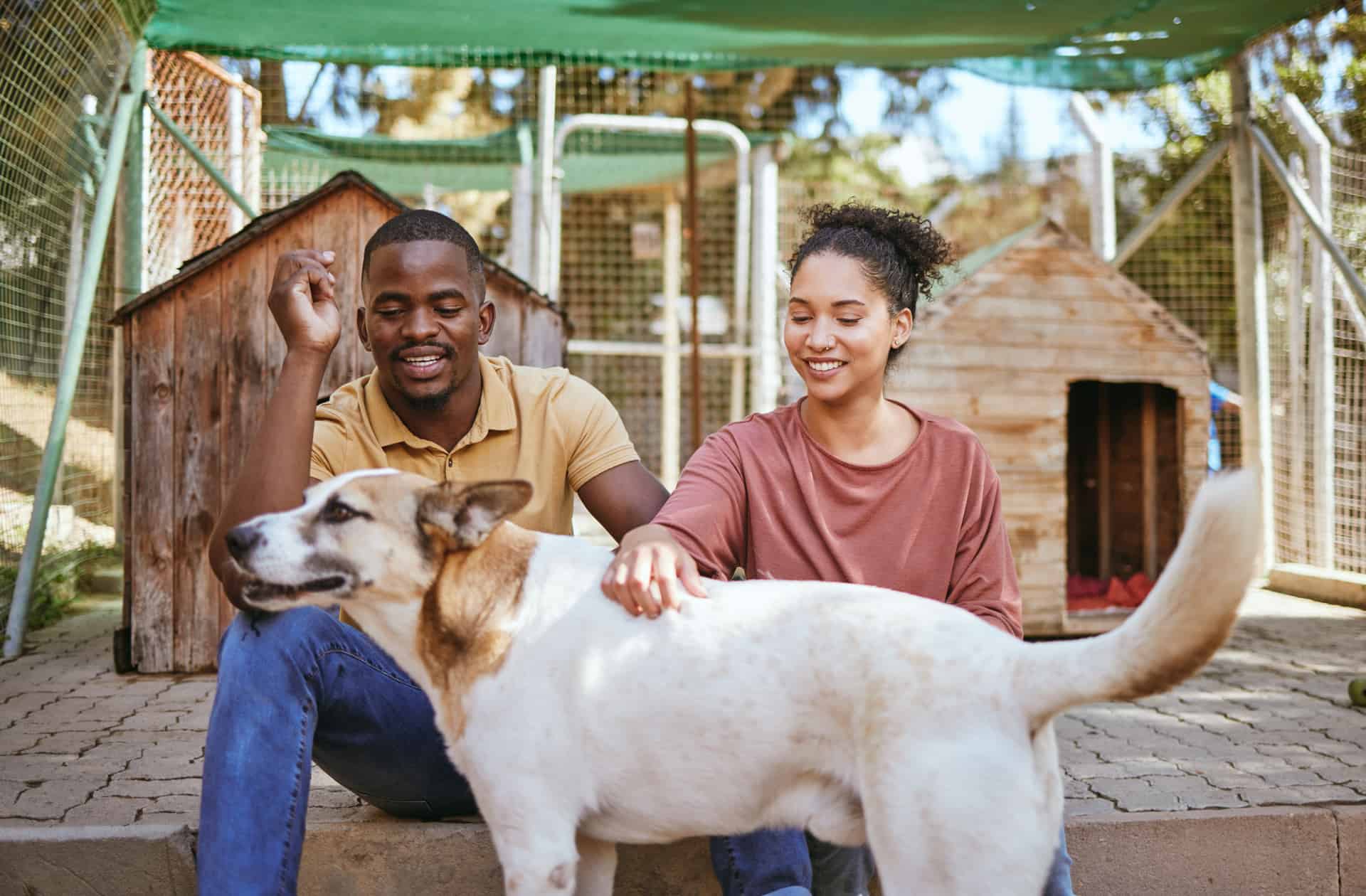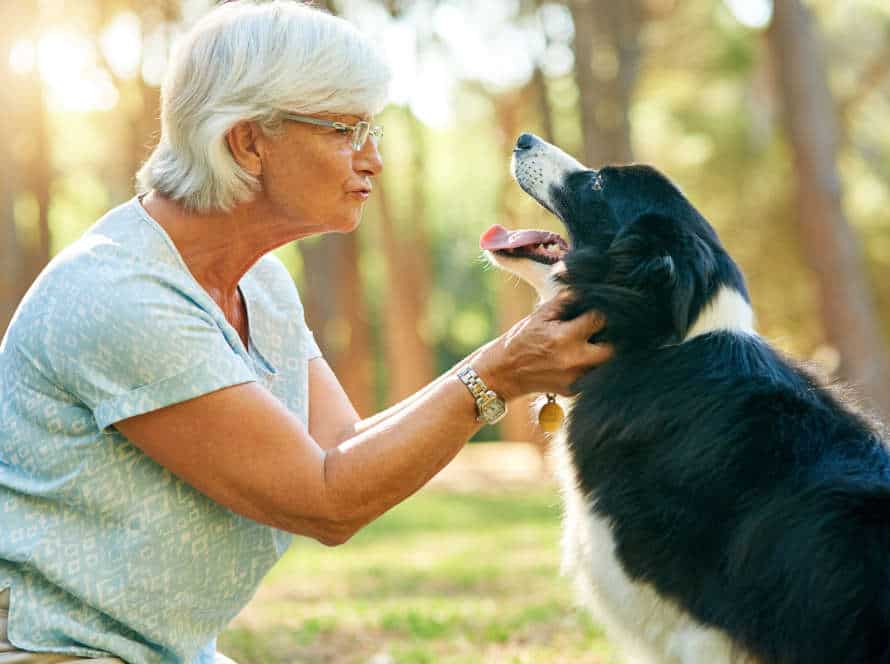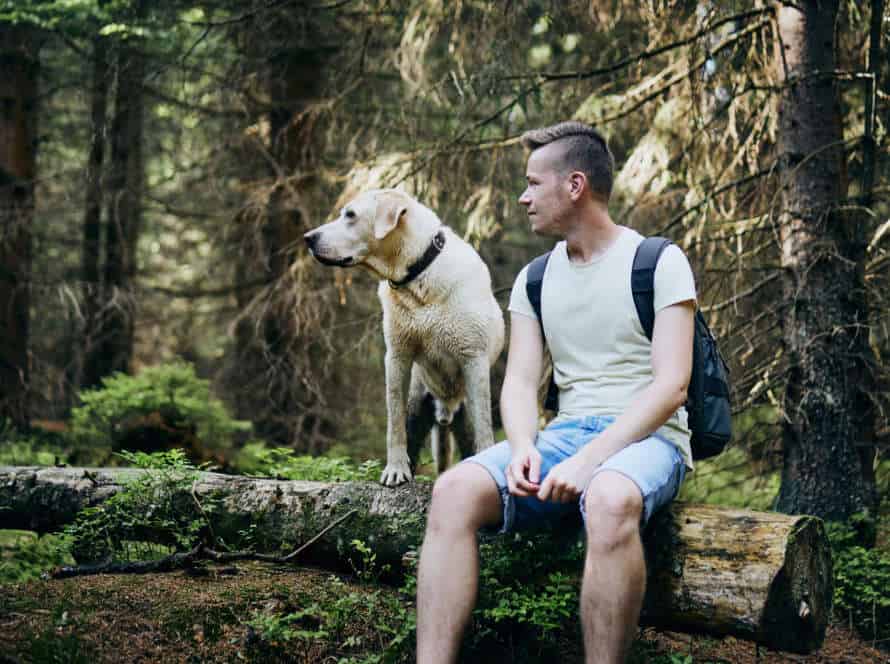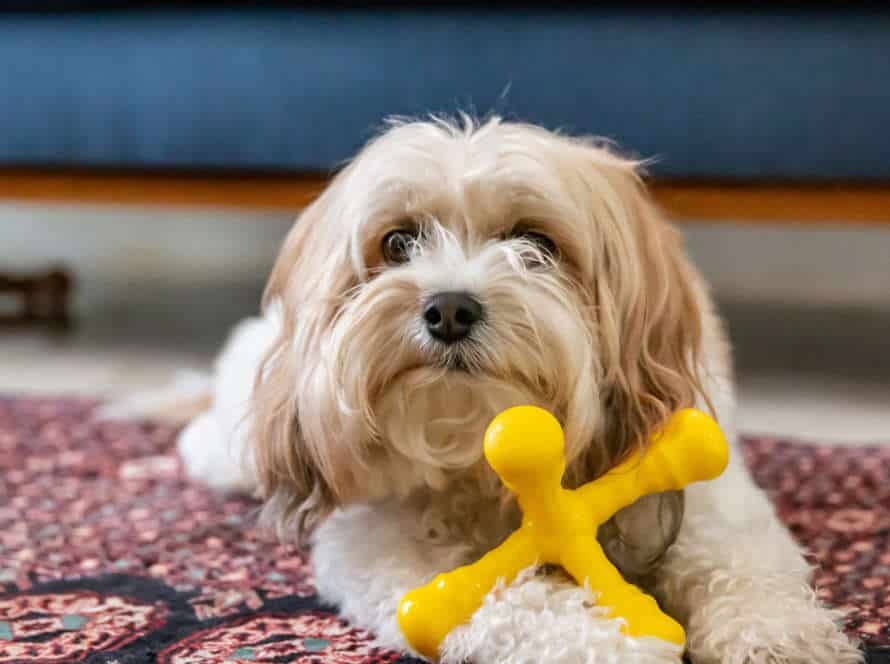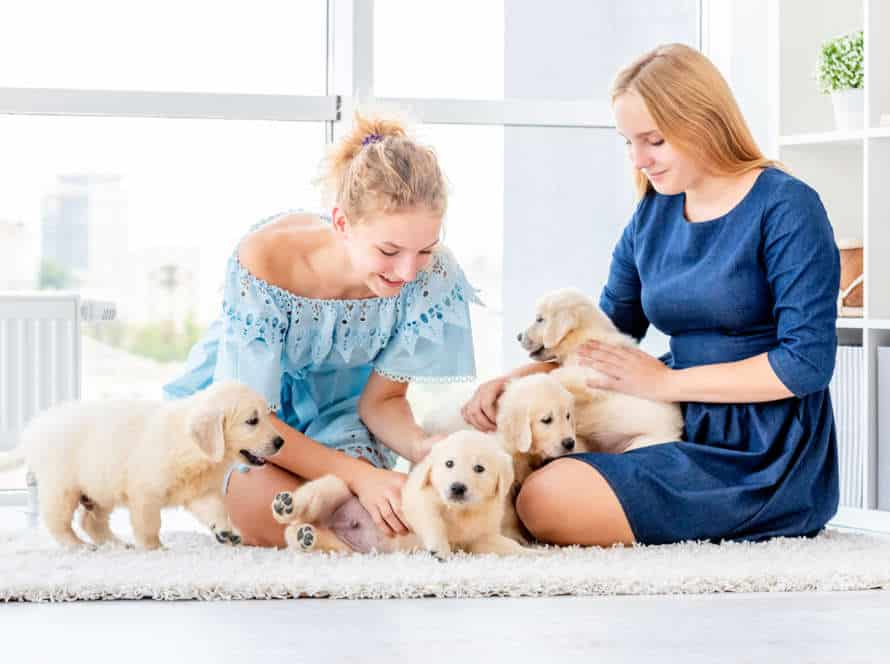Reinventing Routine: Helping Your Rescue Dog Adjust
It can be hard for rescue dogs to adjust to a new home. Here are some top tips to reinvent your routine and make your furry friend comfortable:
- Stick to a plan – dogs need routine. Give them meals, walks and playtime at the same times each day.
- Make a cozy and safe space for them to relax when anxious.
- Reward good behaviour with treats, praise and cuddles.
- Be patient and give them time to adjust.
- And if you need extra help, find a certified dog trainer or behaviourist.
With these tips, you can ensure your rescue dog feels settled and secure in their new home.
Understanding the Rescue Dog’s Background
To help your rescue pup adjust to their new home, it is essential to understand their background. Many rescue dogs have been neglected or abused, and may have had a poor diet or minimal socialization. Invest time to learn the details of your pup’s past life. This can give you insight into their individual needs. This will allow you to create a successful routine that will provide comfort and security for your rescue pup.
Learning About Your Dog’s Behavioral Issues
Comprehending your rescue pup’s past is essential for addressing any behavioural troubles that could crop up in their adjustment period to the new home. Rescued dogs often have gone through some trauma or neglect, resulting in specific behaviours like fear, aggression and meekness. Knowing their background can help you better aid them.
Here are some steps to assist your rescue pup adjust:
- Have a consistent daily routine with meal times, walks, playtime, and training sessions that your pup can depend on.
- Generate a secure and tranquil ambience by giving a comfortable living space, toys, and an assigned area for the pup to rest during nerve-racking scenarios.
- Progressively show your pup to new people, settings, and other animals to establish their trust and socialisation abilities.
Pro tip: Have patience and remain positive, as the adjustment period could take anything from a couple of weeks to numerous months depending on the pup’s history and character.
Identifying the Triggers That Affect Your Dog’s Behavior
Knowing the triggers that affect a rescue dog’s behaviour is essential for understanding and training them. Rescued dogs often have fears and anxieties. Spotting their triggers aids in creating a routine that helps them settle into their new home.
Common triggers of rescue dog behaviour are:
- Loud noises: Rescue dogs may be scared of loud sounds. Creating a peaceful environment ensures they feel safe.
- Strangers: They might be cautious of strangers or too excited while meeting them. Teaching them how to interact with new people in a positive way is important.
- Other dogs: Certain rescue dogs can be anxious around other dogs or aggressive towards them. Training and socializing them helps them learn proper behaviour.
Once triggers are identified, work with a trainer or behaviourist to plan a routine and set boundaries that help the rescue dog feel secure in their new home.
Building Trust and Confidence with Your Dog
Building trust and confidence with a rescue dog can be tough. To help them adjust to their new home, it’s important to understand their background and reinvent routines.
- Understand the Rescue Dog’s Background: Learn about any traumas or abuse they may have had. Discovering their history can help identify triggers that lead to discomfort or fear.
- Reinvent Routine: Aid the Rescue Dog’s Adjustment: Establish a regular feeding schedule, walks, and playtime. Create a peaceful and secure area with toys and cozy places to rest. Show rewards such as treats or praise when they behave or make progress in training.
Pro Tip: Patience and consistency are key. Give them love and respect and a supportive environment to flourish.
Creating a Supportive Home Environment
Adjusting to a new home can be hard for a rescue dog. So, creating a supportive environment is key. Give your pup plenty of comfort and consistency. Plus, ensure they feel safe. Establish a predictable schedule, with consistent rules. Ensure they have comfy places to rest.
Let’s discover how to make your home comfy and secure for your pet.
Developing a Consistent Daily Routine
For personal productivity, stress-management and long-term goal achievement, having a consistent daily routine is essential. Here’s how to make and keep one:
- Set achievable goals for each day and prioritize them by importance.
- Make a schedule that you can stick to, including time for work, exercise, self-care, and leisure.
- Block out distractions like social media and TV.
- Divide the day into manageable chunks and focus on one task at once.
- Take regular breaks, and rest when needed.
For a successful rescue dog home, consistency and routine are key. Set feeding, walking, training, and play times to help your pup feel secure and display positive behavior. Regular routines help them adjust to their new home and form good habits.
Providing the Right Exercise and Enrichment
To help your rescued pup adjust to their new home, exercise and enrichment are key.
Behavioral issues can result from their past experiences, so it’s important to ensure they get proper stimulation.
Training and playtime with your dog can give them the mental and physical exercise they need.
Incorporate obedience training, interactive games, and regular playtime into your pup’s daily routine.
Take them out on walks and socialize them with people and other animals.
Tired pets are calmer and better-behaved, so providing regular activities to make life more entertaining is a great way to help your pup feel at home.
Creating a Safe Space for Your Dog
Creating a secure home for your pup is crucial for its wellbeing and joy. Dogs require a safe and supportive home atmosphere to flourish. Here are some tips for establishing a secure space for your pup:
- Designate a special area for them. Dogs feel secure when they have an assigned space that they regard as their own.
- Put up safety gates and barriers. To stop your pup from wandering into areas that may be hazardous, use safety gates and barriers.
- Supply enough toys and activities. Pups need mental stimulation and physical activities to keep them involved and content.
- Set up a Routine. Establishing a routine will help your pup adjust to a new environment or changes to their current environment. This will stop them from feeling anxious and help them to be content.
Seeking Professional Support
In aid of adjusting your rescue dog to a new home, professional help is essential. A pro can give useful advice and training to make your rescue pup feel safe.
Let’s examine the different types of professional aid accessible for your rescue dog. This includes training classes and animal behaviorists.
Finding the Right Trainer or Behaviorist
Finding the perfect pro for your rescue pup’s behavior is a must! Here are some tips to assist you in making an educated choice:
- Investigate and compare trainers/behaviourists in your region. Ask other pet owners, animal shelters or vets for advice, and review online feedback and reviews.
- Check if they have a cert, like the Certified Professional Dog Trainer (CPDT) cert, to make sure they’re qualified and seasoned.
- Pick someone who applies positive reinforcement methods and avoids negative reinforcement or punishment strategies.
- Have an initial consultation and ask queries about their plan, experience, and prices.
By locating an accredited and experienced trainer/behaviorist that utilizes positive reinforcement strategies, you can help your rescue pup adjust to their new life with regularity and patience. Bear in mind, each pup is special, and the ideal trainer will customize their approach to fit you and your pet’s particular requirements.
Understanding Medications and Supplements
There are many meds and supplements for dogs. Knowing the uses and potential side effects is essential before giving them to your rescue dog. Speak with a vet when considering meds or supplements, as different kinds have different effects on different dogs.
Common medications include:
- Antibiotics to fight bacteria
- Painkillers – opioids and NSAIDs to manage pain
- Corticosteroids – to reduce inflammation and help allergies, arthritis and immune system disorders
- Supplements – glucosamine and omega-3 fatty acids for overall health
Always consult your vet for meds or supplements to avoid dangerous side effects. Good communication with your vet can make treatments more effective and improve your dog’s life.
Considering Alternative Therapies
Alternative therapies can be a great way to help traditional treatments – especially when it comes to helping rescue dogs adjust to their new homes. Consider:
- Acupuncture: Ancient Chinese practice. Stimulate the nervous system and relax. Reduce stress and anxiety.
- Massage therapy: Petting and messaging your dog can help soothe muscles and anxiety. Create a sense of calm and security.
- Aromatherapy: Essential oils can aid relaxation, reduce anxiety. Consult a vet or certified aromatherapist before use.
- CBD: Cannabidiol (CBD) from hemp plants. Reduce anxiety and inflammation in dogs.
Note: Use these alternative therapies with professional support from a veterinarian or behaviorist. Not as a replacement for traditional treatments.
Working with Your Dog
Working with your rescue pup can help them adjust to their home and routine. Set boundaries and provide structure for learning and growing. Be aware of their needs. Tackle problems quickly. Create a safe and healthy environment. Your pup will thank you!
Training Techniques for Rescue Dogs
Training rescue dogs can be tricky. But, with the proper methods, patience and consistency, you can help them settle in their new home and be a good pet. Here are some tactics that could help:
- Positive reinforcement – Treats and compliments for good behaviour can help create good associations with training.
- Clicker training – A clicker to mark good behaviour can help your dog know what’s expected.
- Consistency – Making a training plan and following it can help the pup learn quickly and be obedient.
- Socialization – Introducing your rescue dog to people, other animals and different environments will make them more confident in varied situations.
- Patience – Give your dog time to get used to their new home and be patient as they learn new commands and behaviours.
Remember, each rescue dog is different, so adjust your training to their personality and needs.
Positive Reinforcement and Rewards-Based Training
Positive reinforcement and rewards-based training are awesome for working with your rescue pup. They help them adjust to their new home and routine. Here’s how:
- Find behaviors and actions you want to encourage, like following commands, behaving well and potty training.
- Treat or cheer them when they do the right thing.
- Keep rewarding the behavior and reduce treats over time.
Positive reinforcement and rewards-based training make a connection between good behavior and rewards. This helps your pup overcome past trauma and builds trust between you.
How to Address Behavioral Problems
Behavioral problems in rescue dogs are common. Patience and steady training are needed to address them. Here’s advice on how to help your rescue dog adjust to their new routine:
- Set a schedule of regular feeding, exercise, training, and sleep.
- Positive reinforcements – like treats, praise, and toys – reward good behavior.
- Socialize your pup by going to dog parks or introducing them to other friendly dogs.
- Everyone must be on the same page concerning your training approach.
- If the behavioral issues persist, seek help from a professional dog trainer or behaviorist.
With time, steadiness, and persistence, you can help your rescue dog adjust to their new routine and conquer any behavioral problems.
Building Long-Term Relationships
Don’t settle for just feeding and sheltering a rescue pup. To have a lasting and healthy bond with them, it’s essential to set up routines and boundaries. Routine offers stability and consistency, making the pup feel secure in their new home. Let’s check out how to help your rescue dog adjust and establish long-term relationships.
Understanding the Lifelong Needs of Your Rescue Dog
Bringing home a rescue pup is a big responsibility. It’s vital to grasp their lifelong requirements to form a lasting bond with them. One of the main steps to adopting a rescue dog is helping them adjust to a fresh routine in their new abode. Here are some tips to make the transition smoother and aid them in settling into a new life:
- Be understanding: Remember that rescue dogs may have had a hard past and might take time to trust their new home.
- Set up a routine: Establish a consistent daily routine to make your rescue pup feel secure and content in their new environment.
- Supply lots of positive reinforcement: Acknowledge and reward your rescue pup for good behavior.
- Build a safe space: Set up a pleasant and safe place where your rescue pup can go to when they need a break.
- Give them time: Give your rescue pup time to adapt to their new home and family. With patience, love, and care, your rescue pup will get used to their forever home and become a devoted companion for life.
Fostering Strong Bonds with Your Pet
Fostering strong ties with your pet is essential for a lasting relationship. Here’s how to reinvent your routine and create a bond that lasts:
- Be kindly patient. Let your dog adjust to the new home at their own speed. Don’t push them into a scary spot.
- Make a daily plan. Set up a feeding, play and sleep time. This will give stability to both you and your pet.
- Show love. Use positive reinforcement to make a strong connection. Give treats, compliments and hugs often to reward good behaviour.
- Understand each other. Learn to read your pup’s body language and noises. This will help you two converse and bond.
Pro tip: Building a bond needs time, patience and energy. Enjoy the journey!
Helping Your Dog Thrive in Their New Home
Bringing home a rescue dog can be tough for both of you. But, there are steps to take for a smooth transition.
Establish trust, love, and respect with quality time, games, and training. Minimize stress by creating a routine for feeding, walking, and play. Also, give your pup time to adjust to their new environment. Be patient, understanding and give lots of love and positive reinforcement. That’ll make them feel safe in their new home.
Frequently Asked Questions
Q: How long does it take for a rescue dog to adjust to a new routine?
A: Every dog is different but in general, it takes around 3-6 months for a rescue dog to fully adjust to a new routine.
Q: What are some tips for helping a rescue dog adjust to a new routine?
A: Some tips include establishing a consistent routine, providing plenty of exercise, positive reinforcement training, and offering lots of love and patience.
Q: What are some common behavioral issues with rescue dogs adjusting to a new routine?
A: Some common behavioral issues include anxiety, aggression, barking, and destructive behavior. These issues can often be resolved with proper training and patience.
Q: Can a rescue dog ever fully adjust to a new routine?
A: Yes, with patience, consistency, and proper training, a rescue dog can fully adjust to a new routine and become a wonderful family companion.
Q: What are some benefits of establishing a routine for a rescue dog?
A: Some benefits include reducing anxiety, establishing trust, improving obedience, and strengthening the bond between the dog and owner.
Q: Should I consult a professional trainer to help my rescue dog adjust to a new routine?
A: It is always a good idea to consult with a professional trainer, especially if your dog is exhibiting difficult or aggressive behavior. A trainer can help you develop a customized plan to address your dog’s specific needs and behavior issues.

